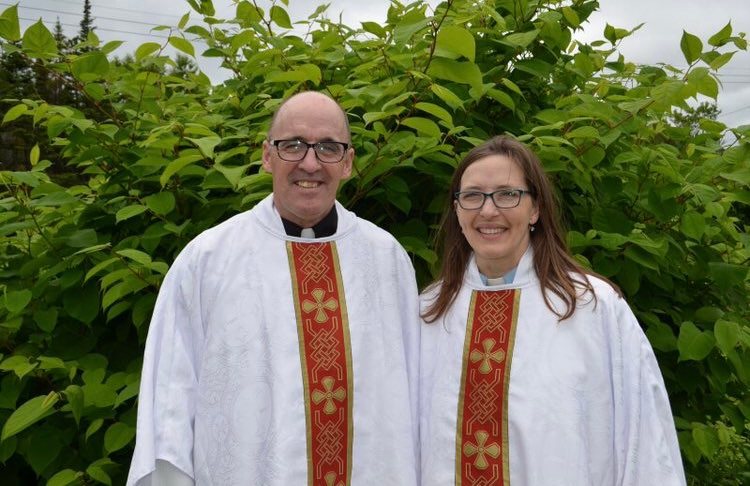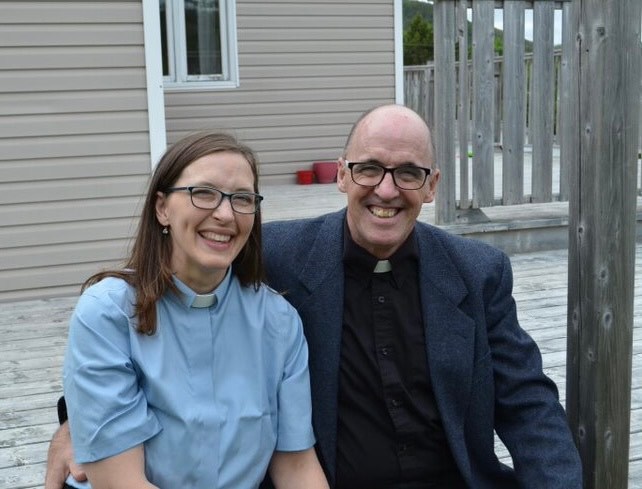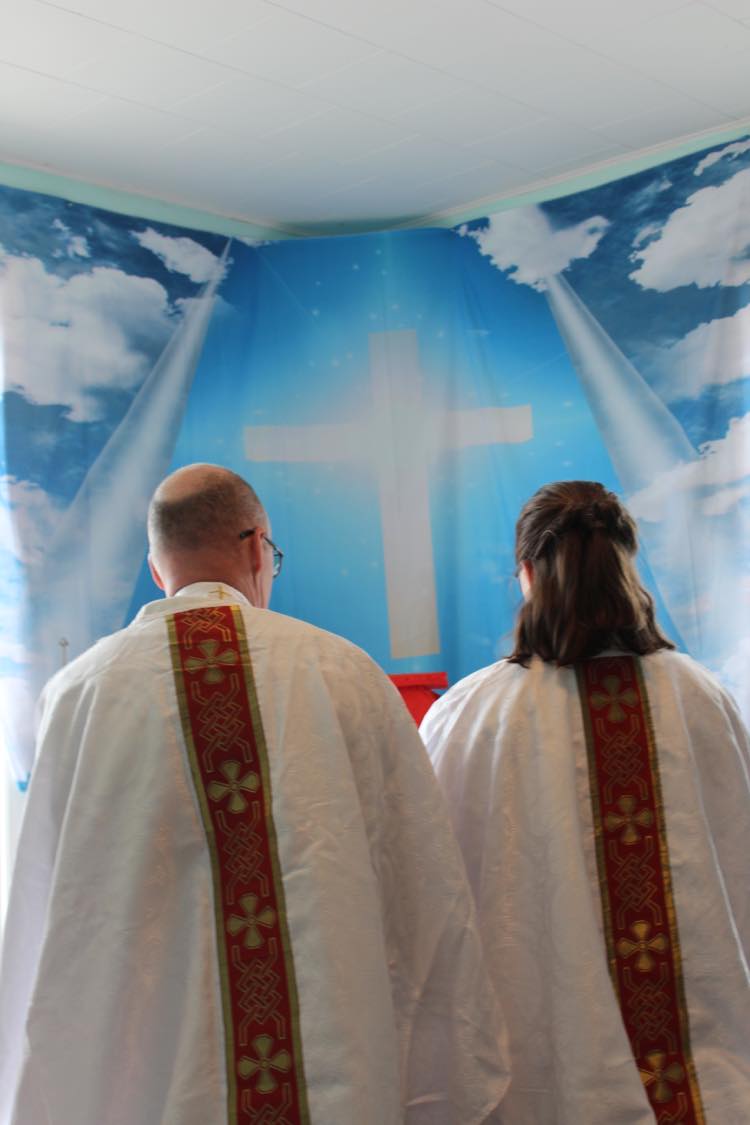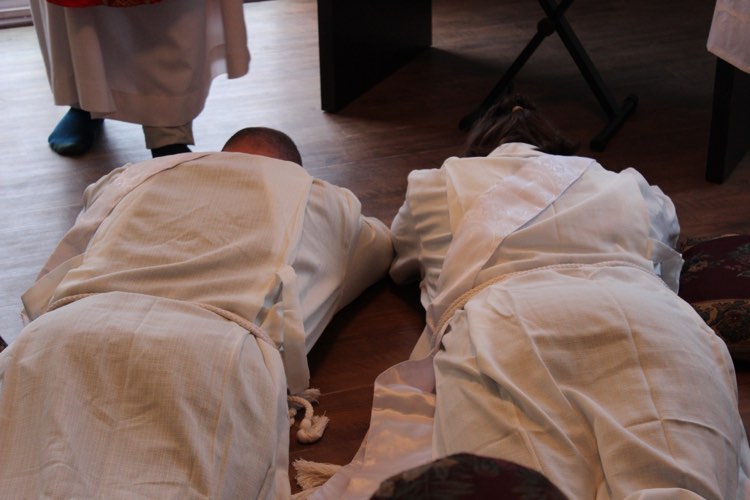- Home
- Seminary Studies
- Comparative Religions
Simply Catholic and Welcoming You
Comparative Religions

Fr. Philip and Amma Charlene Bradley at St. Brigit's Community Catholic Church We Are Blessed to Serve Together as a Married Couple Who Are Both Priests
Comparative religions is the systematic study that analyzes and compares the doctrines, practices, and impacts of the world's religions. It focuses on identifying similarities and differences in beliefs, myths, rituals, and concepts across various religious traditions.
Before we can compare religions we need to attempt to define religion itself.This becomes immediately complicated as there is no generally agreed upon definition of religion. Indeed we don’t even know the source of the word ‘religion’.
On that basis let’s instead look at what every presumed authentic religion has in common.
They each have a sense of the holy or the sacred.
There is a self response to the holy referred to as faith. For some this is an implicit faith but to become a religion there needs to be a shared explicit faith in the holy.
That faith is then defined as beliefs.
Those beliefs are causative in setting moral behavior and rituals around the concept of the holy.
A community of persons come to share these perceptions, meanings, values and behaviors and a structure develops. (For some this structure remains loose and rudimentary and others may actually codify their structured faith.)
Here's a more detailed look at the Key Aspects of Comparative Religions:
Systematic Comparison
This field doesn't just randomly compare religions rather it uses established methods and theories to analyze and contrast different religious traditions.
Themes and Impact
Beyond comparing specific rituals or beliefs, comparative religion examines how religions shape societies, influence cultures, and impact individuals' lives.
Interdisciplinary Approach
Comparative religion often draws on insights from anthropology, sociology, history, and other disciplines to provide a more comprehensive understanding of religious phenomena.
Focus on Similarities and Differences
By comparing different religions, comparative religion highlights both the common threads and the unique characteristics of each tradition.
Understanding Religious Diversity
This field helps to build understanding and appreciation for the diverse ways humans have expressed their spirituality and faith.
Comparative Religions; Examples

Amma Charlene and Fr. Philip Bradley a Married Priesthood Couple Sharing Their Lives and Ministry
Examples of Comparative Religion
In the broader context, in the field of comparative religions, a common geographical classification of the main world religions distinguishes groups such as Middle Eastern religions (including Abrahamic religions and Iranian religions), Indian religions, East Asian religions, African religions, American religions, Oceanic religions, and ancient religions.
Comparing Abrahamic religions (Judaism, Christianity, Islam):
This involves examining their shared origins in Abraham, their different prophets, sacred texts, and beliefs about God.
Comparing Eastern religions (Buddhism, Hinduism, Taoism):
This might involve comparing their concepts of enlightenment, karma, reincarnation, and different paths to spiritual liberation.
Comparing ancient religions (Celtic, Greek, Roman, Egyptian):
This could involve analyzing their pantheons of gods, myths about creation, and rituals related to death and the afterlife.
Purpose of Comparative Religion
To understand the history and evolution of religious traditions.
To identify common human experiences and themes expressed in different religious contexts.
To foster intercultural understanding and dialogue.
To develop a more nuanced and critical understanding of religion in general.
To provide a basis of understanding for valid interfaith ministry.
Present day religions include (without being limited to);
Zoroastrianism
With its emphasis on the struggle between good and evil, the dualism in life.
Hinduism
Which teaches that salvation is only possible through absorption in the knowledge of the one true reality the Absolute/Brahma.
Buddhism
Which teaches that we can break out of the cycle of rebirths and attain Nirvana (dissolution) by overcoming all our desires.
Taoism
Which call upon us to live in harmony with the universe as determined by the Way/Tao
Shintoism
Essentially a polytheistic religion with a simple worship of nature.
Islam
Which emphasizes the oneness of God/Allah and his supremacy over every detail of human existence. With emphasis also on judgement, resurrection, prayer, fasting and alms giving.
Judaism
Which stresses the Covenant, the land, the past and the coming Kingdom of God.
Christianity
In its many iterations or expressions, it sees the Christian God as being at once transcendent (beyond the world of created reality) and immanent (within the world). Holds to the triune nature of God (one God yet three separate persons as the Father, Son (Jesus) and the Holy Spirit. See Jesus as having been incarnate into humanity. Fully God and fully man. His passion, death and resurrection provide for our salvation and there will be a day of judgement and resurrection.
Given the diversity within the Christian faith it should be no surprise that the Catholic position on other religions has changed dramatically over the centuries.As of Vatican II the Roman church, with all other catholic rites following in turn, now has a much more accepting stance on non Christian faiths than was previously thought possible.
The present official teaching of the Catholic churches acknowledges the salvific (salvation) value of non-Christian religions and calls for religious liberty among all and open dialogue between all religions.
At St. Brigit’s Community Catholic Church, we have always been involved in interfaith ministries as well as our Catholic ministry. We see clearly that for us to claim the right to practice our religion/faith as we uniquely see fit, it logically follows that we must expect to extend that same right and privilege to all other faiths. Fortunately we are blessed to live in Canada where these same rights are entrenched in our constitution.
When involved in interfaith ministry, ministers/priests (Interfaith Chaplains) have a strict adherence to absolutely no proselytizing (no seeking conversions). Interfaith ministry is like being a religious social worker. We are not there to establish or advance our specific faith. We are there to assist the client(s) on their own faith journey by providing information and contacts between them and their faith ministers, attempting to facilitate their needs within the context of their faith or church of origin.
In interfaith ministry I might contact a minister/priest from another church today on behalf of someone from their faith. Tomorrow they, in turn, may need to contact me on behalf of someone they are now ministering with. By working together with many different faith groups we each help the other and open dialogue between our faiths/churches.
Recent Articles
-
Catholic-Confession
Apr 19, 25 08:53 PM
Full breakdown of the Catholic Confession Sacrament of Reconciliation -
Ordination, incardination and dismissal of clergy
Mar 03, 25 06:47 PM
Overview of Ordination to Holy Orders, incardination and dismissal of clergy -
Catholic Last Rites
Mar 03, 25 06:41 PM
An explanation of the Catholic Last Rites and Anointing of the Sick


